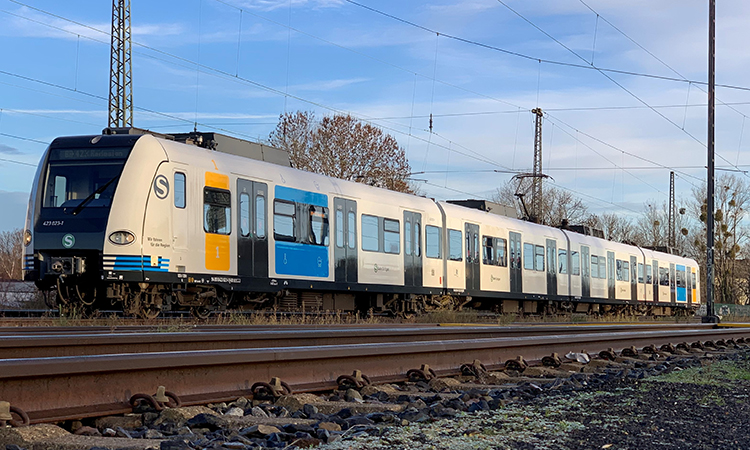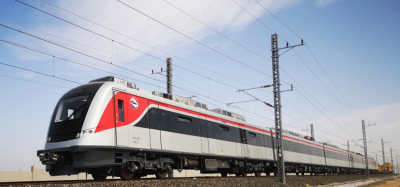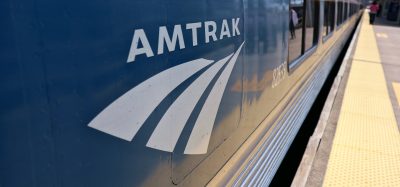DB Regio contracts Alstom to equip 215 S-Bahn trains with ETCS and ATO
Posted: 29 June 2021 | Global Railway Review | No comments yet
As part of the landmark rail project Stuttgart 21, Alstom will retrofit DB Regio’s BR 423 and BR 430 trains with ETCS Level 2 and 3, as well as ATO GoA2.


Credit: Dominik Schleuter/ Alstom - BR 423 train operating in the Greater Stuttgart area.
Alstom has announced that it has signed a contract with Deutsche Bahn’s (DB) DB Regio AG to equip 215 of Stuttgart, Germany’s S-Bahn trains with the European Train Control System (ETCS) and Automatic Train Operation (ATO) signalling technology.
As part of the landmark rail project known as Stuttgart 21, the contract will see Alstom retrofit the BR 423 and BR 430 trains that are operating on the greater Stuttgart area’s S-Bahn and conventional railway lines. The contract is worth approximately €130 million.
Implementing ETCS Level 2 and Level 3, as well as ATO in automation level 2 (GoA2), will ensure more sustainable operation, shorter headways and a denser train sequence, while supporting the associated relief of individual trains. With an overall smoother flow of rail traffic, passengers can look forward to more frequent service and faster connections.
“By equipping the vehicles with the latest signalling technology and the innovation partnership with Deutsche Bahn, we are jointly making a decisive contribution to the implementation of the Stuttgart 21 lighthouse project and the digitalisation of German rail transport,” said Michael Konias, Head of Digital and Integrated Systems at Alstom for Germany, Austria and Switzerland. “This signalling contract for the Stuttgart S-Bahn is another demonstration of the valuable synergies resulting from Alstom’s acquisition of Bombardier Transportation. The contract will also create over 150 digital rail jobs in Berlin, Braunschweig and Mannheim.”
Initially, Alstom will retrofit and re-release two BR 423 and four BR 430 prototype vehicles with ETCS Levels 2 and 3, as well as ATO GoA2, by the end of 2023. The contract also includes the delivery of the series equipment and the supervision of the installation of a further 58 BR 423 and 151 BR 430 series vehicles.
As early as January 2025, the retrofitted S-Bahn vehicles will operate on the first lines to be equipped with ETCS Level 2. At the end of 2025, ETCS Level 2 operation with ATO GoA2 will begin on the S-Bahn main line. Once complete, the frequency of services will be increased.
When equipped with the latest ETCS signalling technology, the traction units will begin entering service in 2025, in time for the launch of the Stuttgart Digital Node, Germany’s first digitalised rail hub for all train categories.
A contractual agreement for the future upgrade to the next ETCS Technical Specifications for Interoperability standards has already been agreed for 2026/27. In addition, DB and Alstom are also cooperating to develop and implement further signalling technologies to continue driving the urban rail digital revolution that is taking place in Germany.
Together with DB, Alstom will also carry out pioneering work and define the minimum requirements for signalling technology so that the implementation of the European-defined ETCS/ATO standard can take place for the large-scale rollout in Germany. In addition to ETCS and ATO, there is close cooperation on four innovation topics, with their implementation also being part of the cooperation:
- Preparing for the introduction of Future Railway Mobile Communication System (FRMCS) technology: FRMCS follows the current GSM-R technology. It is based on 5G mobile technology and is able to transmit, process and analyse data collected by sensors and cameras in trains, at stations and on tracks in real time through higher data rates and lower latency times
- For the first time in Germany, various interfaces according to emerging OCORA standards are being implemented. The standardisation of the interface between ETCS/ATO and the vehicle will, in particular, simplify subsequent software upgrades
- Introduction of a technology for permanent determination of train integrity (Train Integrity Monitoring System, or TIMS), which is a prerequisite for later ETCS Level 3 operation. ETCS Level 3 enables an even further increase in capacity with a simultaneous reduction of track elements (e.g. axle counters)
- By introducing a technology for continuous vehicle data transmission (Capacity & Traffic Management System, or CTMS) on the line, a first step is taken for a capacity-increasing dynamic traffic management system that enables optimal fleet and timetable management through complex artificial intelligence (AI) algorithms.
To meet the high performance, availability and automation requirements of future digital railway operations, Alstom will deploy its latest and compact version of EVC (EVC-3) with integrated ATO software from the Atlas product family. Alstom will flexibly integrate the different versions of the PZB train control system (I60R or EBICAB) that are is currently installed on the vehicles and modify the vehicle control system accordingly.
The project is being managed by the Alstom signalling site in Berlin in close cooperation with the ETCS competence centre in Charleroi. Other sites are involved in the various project phases: Braunschweig, Salzgitter, Mannheim, Hennigsdorf, Bangalore, Lyon-Villeurbanne and Bucharest. The conversion of the prototype vehicles will take place at the Hennigsdorf site. The series conversion will be carried out by Deutsche Bahn itself, with Alstom providing support for the conversion and commissioning at three DB vehicle maintenance sites.
Related topics
5G, Artificial Intelligence (AI), Automatic Train Operation/Autonomous Train Control (ATO/ATC), Big Data, Digitalisation, European Train Control System (ETCS), Future Railway Mobile Communications System (FRMCS), Global System for Mobile Communications – Railway (GSM-R), Rolling Stock Orders/Developments, Signalling, Control & Communications, Technology & Software








